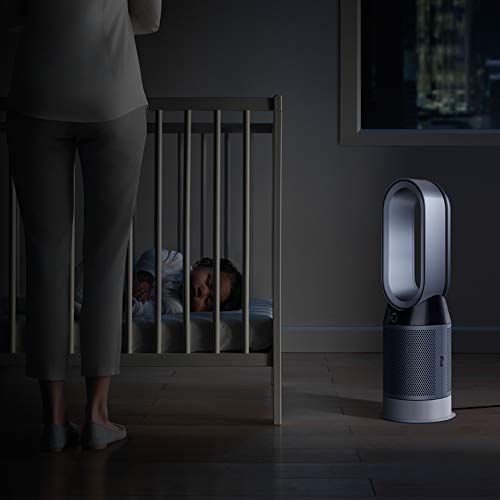
We care a lot about your indoor air quality, and this is why we want to share with you 10 ways to reduce air pollution at home. Nowadays, we’re mostly stuck at home due to a worldwide pandemic, but that doesn’t mean that we’re completely safe! Indoor air pollutants can still be lurking in some corners of the house.
That’s why we put together this simple guide to help you figure out what’s going on with your home, which pollutants can be harmful to your health, and how you can get rid of such pollution.
After all, it can be difficult to tell if your indoor air is polluted since you’ve been used to it and probably adapted to it, too. We’ll also state in this guide some tips and tricks on how to determine poor air quality, as well as what you can do to improve the cleanliness of your indoor air.
10 ways to reduce air pollution at home
There are many bad effects of pollution on humans, animals, plants, and the environment, and that’s why we need to get rid of it (or at least lessen it). Here are some ways to do it:
- Reduce smoke indoors. This means you’ll have to designate a smoking area outside so that the tobacco smell doesn’t linger inside your home. Also, if you plan to cook fried food, you might want to do it outdoors instead, or you can try opening up windows or installing exhaust vents so that the smoke from your cooking goes outside.
- Clean up. By sweeping, mopping, and wiping up windows, you can reduce the dust that goes inside your home.
- Invest in an air purifier. An air purifier has a special system of filters that reduces air pollution at home, specifically targeting dust, dirt, and even bad odor. Here are some of our suggested picks just for you:
| Air Purifier | Filter System | Best Use | Square Feet Coverage |
| Blueair Classic 680i | HEPA silent filter, sustainable coconut carbon filter | Homes with limited space, Alexa systems | 700 to 800 |
| Medify MA-112 | H13 True HEPA with 3-stage filtration | Medical-grade | 1,250 to 5,000 |
| Coway Airmega 400 | Washable pre-filter, activated carbon, true HEPA | Large rooms, living rooms, bedrooms | 1,560 |
| Dyson Pure Hot + Cool Air Purifier | Sealed HEPA filter | Offices, bedrooms, apartments, small homes, and rooms, Alexa systems | 200 to 600 |

The Blueair Classic 680i is not like any other air purifier out there – it has wheels! This would be helpful if you don’t exactly have a big house, to begin with, and want to use the air purifier in specific rooms at a given time. Aside from its filter system, it also has air quality sensors so that you don’t have to manually adjust it depending on the air quality levels.

We think that the Medify MA-112 might work well if you need a medical-grade air purifier. Since you can order it in a 2-pack, you can use it even in larger homes so this might be your pick if you need a powerful air filtration device at home.

What we like about the Coway Airmega 400 is that it has an LED ring light that lets you know the air pollution levels at home so you know that it is doing its job properly. It’s also programmable with its custom timer and the highest setting is only around 43 dB – not too noisy if you ask us!

The uniquely-designed Dyson Pure Hot + Cool Air Purifier might be a choice for you if you prefer something portable. It’s not just Alexa-compatible – it’s also a space heater and an air purifier is just one unit! What’s more – it even oscillates so it can cover the entire room more efficiently than most air purifiers out there.
- Impose a no-shoe policy. You can do this for family members and guests. Or, you can just slip a doormat as well.
- Bathe and groom pets outside. If you do this, pets are less likely to leave fur and pet dander at home.
- Lessen surfaces. You can get rid of some tables and furniture that you aren’t using so that dust doesn’t settle on a lot of surfaces.
- Lessen the carpets at home. Carpets can catch dust so lessen the amount at home if they’re not needed.
- Ventilate your home. You can use electric fans or air conditioners, as well as opening up the windows and vents when necessary.
- Launder drapery. Curtains can also hold dust so it’s a good idea to wash them regularly.
- Cover and dispose of trash properly. Trash not only creates bad smells but it also pollutes your indoor space. Keep them covered and sorted out until the garbage truck comes by.
What are the 10 types of pollution?
These common types of pollution can be found at home through the following:
| Air | Cooking smoke, tobacco, pet dander, dust, pollen |
| Light | Excessive use of indoor lights |
| Noise | Loud music, motors, and people |
| Plastic | Disposable plastic items |
| Thermal | Dumping hot water away |
| Visual | Excessive furniture |
| Water | Mold and contamination |
| Radioactive | Toxic garbage (e.g. batteries) |
| Soil | Pesticides and household chemicals |
| Garbage/litter | Trash and trash bags |
What are the 4 major indoor air pollutants?
These common indoor air pollutants could be a threat to your home:
- Carbon monoxide from gas leaks
- Secondhand smoke
- Lead from paint
- Mold (which might cause allergies and dizziness)
What are the symptoms of poor air quality?
Bad air quality is usually indicated by a bad smell that makes you feel nauseated or your nasal allergies acting up. You may not feel it, but your guests might since they aren’t used to the air inside your home.
Fortunately, there are ways to test air quality. Check out more on our article on how to test air quality in your home.
Conclusion
To wrap it up, reducing air pollution at home is quite easy to do once you know the methods. By keeping our indoors clean, we can breathe air that won’t harm our respiratory system. We hope that your indoor air stays healthy and safe for you and your family through these tips!


